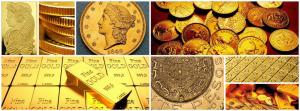Napoleon D’Or Gold Coins
The Napoleon d’or gold coins hold a prominent place in French and European numismatic history, reflecting the economic and political ambitions of the Napoleonic era. Struck primarily in the early 19th century, these gold coins were minted in denominations of 20 Francs and 40 Francs, becoming essential components of France’s monetary system during the reign of Napoleon Bonaparte. They not only served as everyday currency but also symbolized the power and reach of Napoleon’s empire, which had spread across much of Europe.
The issuance of Napoleon d’or coins followed the rise of Napoleon Bonaparte to power after the turmoil of the French Revolution. By the time Napoleon became Emperor in 1804, he had set out to stabilize the French economy, which had been severely affected by the Revolution and the ensuing wars. A major part of his reforms was the restructuring of the monetary system, including the introduction of new coinage.
The French Franc had been introduced in 1795 during the revolutionary period, replacing the Livre as the national currency. The Monetary Law of 1803 established a new gold standard for the Franc, creating a reliable and stable currency system. It was under this law that the Napoleon d’or coins were first minted, with the 20 and 40 Franc denominations being the most notable gold issues.
The design of the Napoleon d’or coins evolved over time, but they typically featured a portrait of Napoleon Bonaparte on the obverse, showcasing his status as Emperor. Depending on the year and mint, variations of his portrait appeared, ranging from depictions of him as First Consul to later, more regal representations as Emperor. The reverse of the coins typically displayed the denomination, the words “République Française” or “Empire Français,” and a wreath or laurel design.
The 20 Francs coin, often referred to as the Napoléon 20 Francs piece, became one of the most circulated and recognizable gold coins in Europe. It weighed 6.45 grams and had a gold content of 90% (equivalent to 0.1867 ounces of pure gold). The 40 Francs coin, being larger, weighed 12.9 grams with a gold content of 90%, representing 0.3734 ounces of gold. These coins were minted between 1803 and 1815, with some later issues under Louis XVIII and Napoleon III retaining similar designs, ensuring continuity in France’s monetary system even after Napoleon’s defeat.

the portrait of Napoleon Bonaparte appears on the obverse side of the 40 Franc Napoleon d’or gold coins
Napoleon d’or coins were not just limited to circulation within France. Their influence spread far beyond the borders of the empire, largely due to Napoleon’s extensive military conquests. As French armies marched across Europe, they brought with them France’s monetary system, including the gold Franc coins. Countries under Napoleonic control or influence, such as Italy, Switzerland, and parts of Germany, also adopted similar coinage systems, creating a de facto common currency across much of Europe.
The Latin Monetary Union, established in 1865, further solidified the prominence of the Napoleon d’or coins. Though the union was established after Napoleon’s reign, it was based on the same principles that underpinned the Napoleon d’or: a standardized gold and silver currency system. France, along with other nations in the union like Italy, Belgium, and Switzerland, agreed to issue coins with uniform weights and metal content. As a result, gold coins like the Napoleon d’or were widely accepted and circulated across national borders, forming a precursor to modern monetary unions.
Today, Napoleon d’or coins are highly sought after by collectors and investors alike, not only for their historical significance but also for their gold content. Their role as both a historical artifact and a tangible representation of the Napoleonic era has ensured their popularity in numismatic circles. The most prized examples are often those in excellent condition or with rare mint marks, such as those from Paris, Lyon, or even Milan, where French authorities minted these coins during Napoleon’s campaigns in Italy.
Collectors also value specific types of Napoleon d’or coins, including the Napoléon Premier Consul versions minted during Napoleon’s time as First Consul, as well as those featuring his regal likeness as Emperor. Some rare issues, like coins struck during the brief return of Napoleon during the Hundred Days in 1815, are particularly sought after.
The Napoleon d’or coins represent a critical period in French history, marking the consolidation of power under Napoleon Bonaparte and the expansion of the French Empire. Issued primarily in 20 and 40 Franc denominations, these gold coins became a symbol of economic stability and imperial power, circulating widely across Europe. Today, they remain valuable for both their gold content and their historical significance, offering a glimpse into the economic policies and ambitions of one of history’s most influential figures.


